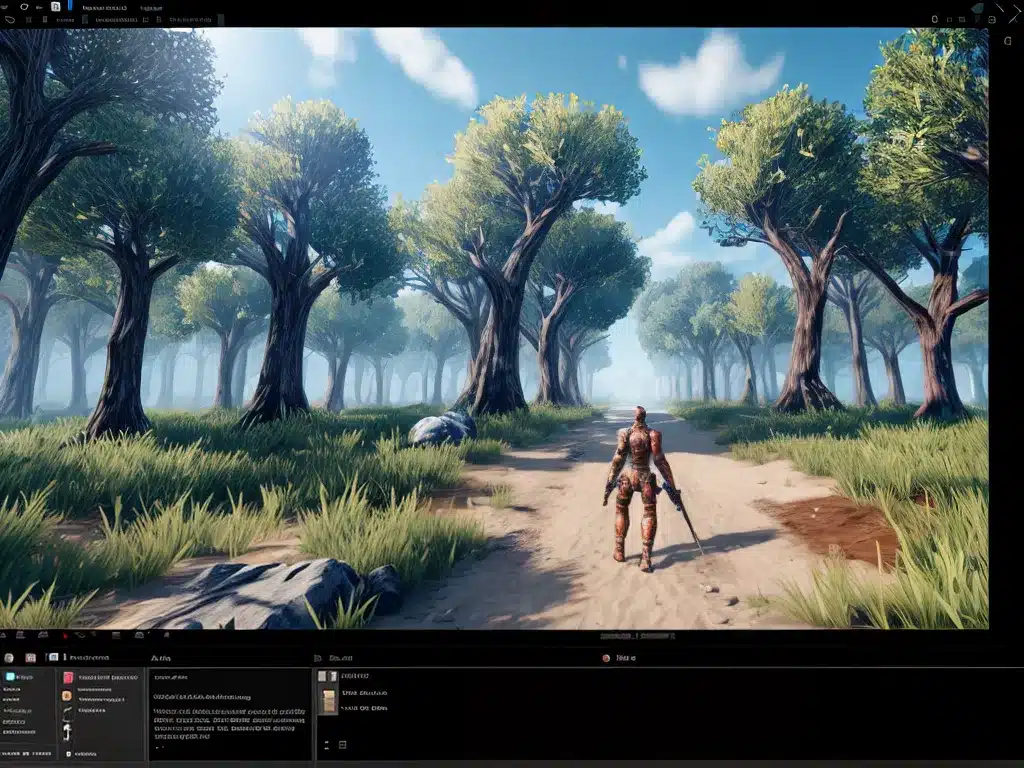
Artificial intelligence (AI) has the potential to significantly impact video game development in a variety of ways. Here is an in-depth look at how AI could help developers create better looking games.
Automating Art Asset Creation
One of the most time-consuming aspects of game development is creating all of the art assets. This includes 3D models, textures, animations, and more. AI algorithms like generative adversarial networks (GANs) can be leveraged to automate parts of the art creation pipeline.
3D Modeling
3D modeling is essential for creating detailed game environments and characters. Currently, 3D artists manually sculpt models based on concept art. With AI, developers could feed the algorithm concept art and have it output a fully modeled 3D asset. This would drastically reduce the time spent on 3D modeling.
Some researchers have already demonstrated using AI to generate 3D models from sketches. As the technology improves, AI-assisted 3D modeling could become a standard part of game development workflows.
Texturing
Applying materials and textures to 3D assets is also a very laborious task. An AI agent could analyze a 3D model and automatically generate physically accurate textures for it. For example, the algorithm could texture a brick wall model with uneven colors and dirt in the cracks.
Texturing automation would allow human artists to focus on more complex textures that require an artistic eye. Simple and repetitive textures like wood, metal, and stone could be handled by AI.
Animation
Procedurally animating 3D characters is another application for AI in game art creation. Motion capture data is commonly used when animating human characters. But there is a lack of motion capture data for fictional characters and creatures.
AI animation techniques like reinforcement learning could allow developers to simply describe how a character should move, and the algorithm would output a procedurally generated animation. This would significantly reduce the manual effort required for animation.
Assisting Human Artists
In addition to fully automating art creation, AI could also assist human artists and amplify their productivity. Algorithms can help with tasks like:
- Auto-completing partial work done by an artist
- Providing an initial rough draft for the artist to refine
- Suggesting small improvements to existing art assets
This allows the human artist to focus on the creative aspects while letting AI handle the tedious and repetitive work. For example, an environment artist could blocking out a rough terrain and use AI to automatically add trees, rocks, and other natural features to make the scene more lively.
Concept Art Generation
Concept art is vital for establishing the visual direction of a game. An AI agent could take a text description and output gorgeous concept art depicting the scene. This gives developers a strong starting point when beginning new projects.
Feedback and Evaluation
AI could also provide feedback to artists and evaluate art assets. Algorithms can perform analysis on 3D models to suggest ways to improve aesthetics and optimize for real-time rendering. For concept art and textures, AI could inform artists if their work properly matches the desired style and theme.
Dynamic, Real-Time Graphics
In addition to assisting with upfront art creation, AI techniques like machine learning can be used to dynamically enhance graphics at runtime. This provides players with more realistic and responsive visuals.
Procedural Animation
As mentioned earlier, AI can procedurally animate game characters on the fly based on their context and player interactions. This brings characters to life in a realistic way without hand animating every possible motion.
Adaptive Level of Detail
Level of detail (LOD) techniques are used to optimize 3D models by decreasing their triangle counts as they get further from the camera. AI-controlled LODs can automatically tweak object LODs in real-time based on where players are looking and their distance to objects. This provides the best balance between visual fidelity and performance.
Super Resolution
Super resolution or upscaling algorithms can be trained on high resolution art assets. At runtime, lower resolution assets and textures can be passed through the AI to increase fidelity. This allows games to render at higher resolutions with minimal cost.
Conclusion
In summary, AI has immense potential for improving game graphics and assisting development teams. Automating repetitive art tasks will boost productivity, while AI-powered graphics will make games more dynamic and realistic. However, human artists remain essential for providing creative direction. The sweet spot is combining the best aspects of human creativity and AI efficiency. With further research, AI and machine learning are poised to become integral parts of game development workflows.












